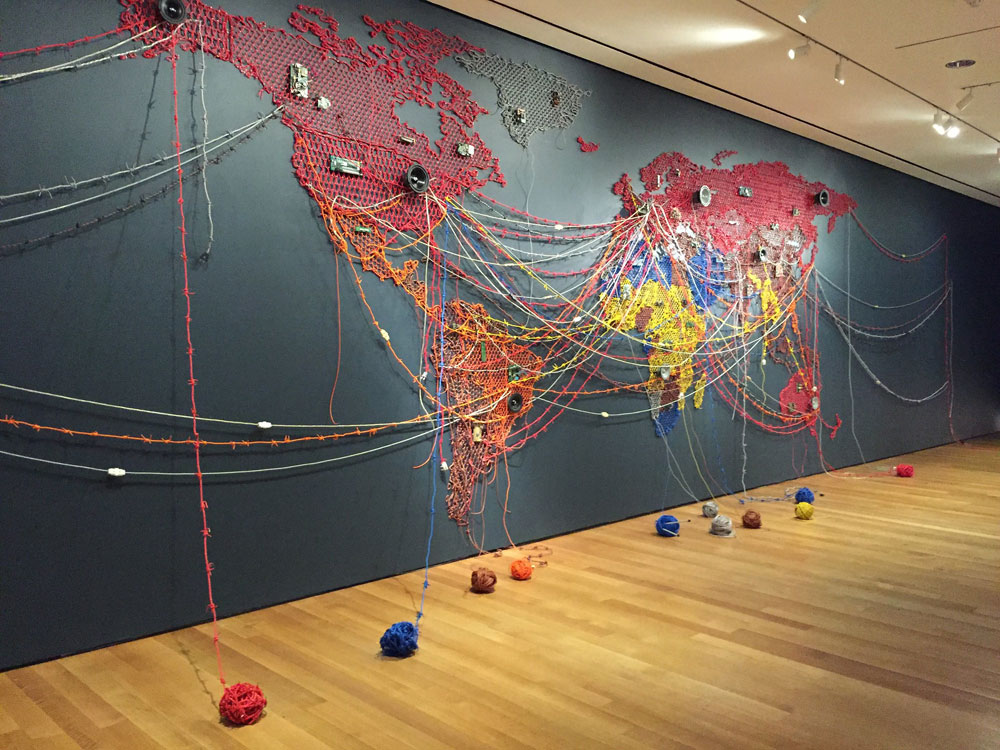
September 5, 2019; Washington Post
Back in February, NPQ previewed plans of New York City’s Museum of Modern Art (MoMA) to not only expand the size of its main facility, but also markedly shift the content that is on display. Now, a month before the museum reopens, the vision behind those plans is coming into clearer focus.
As Sebastian Smee writes in the Washington Post, a lot of the curatorial decisions at MoMa “used to function like holy writ”—setting standards for the field of what was and was not “modern art.” That’s changing. Smee notes that the expansion adds a wing with more than 30,000 square feet of new gallery space. But the museum’s chief curators make clear that the new wing is not the most important part of the renovation.
“Everything we’re doing is actually almost independent of an expansion,” Ann Temkin, MoMA’s chief curator of painting and sculpture, tells Smee. “The way this expansion differs so much from any prior expansion—and we’ve done plenty—is that it is simultaneously a physical expansion and an absolute rethink of the curatorial approach.”
Museum director Glenn Lowry adds that a central goal of the renovation is, as Smee puts it, to bring “the museum back in line with founding director Alfred Barr’s original vision of the museum as a laboratory, a space for experiment.” In the broadest terms, MoMA wants to step back from telling a singular story of “modern art.” It wants instead, says Temkin, to tell “short stories”—a set of different ideas of what modern art is that connect with and sometimes challenge each other.
“The basic fact,” Stuart Comer, MoMA’s chief curator of media and performance, tells Smee, “is that I don’t think any of us believes any longer that there is a singular history. There are a lot of different histories, and how you weave those together is an evolution, an ongoing process. So, we’re approaching the collection less like a canon and more like a conversation.”
Temkin notes that MoMA had expansions in 1984 and 2004 too, but those expansions were about adding “more room to do exactly what we did, the same way we did it.” This time is different. Among the changes, Temkin notes, is that collection galleries will be rotated every six to nine months so the museum can display more art works.
Sign up for our free newsletters
Subscribe to NPQ's newsletters to have our top stories delivered directly to your inbox.
By signing up, you agree to our privacy policy and terms of use, and to receive messages from NPQ and our partners.
There is also a commitment to having teams of curators codesign exhibits, rather than having each curator in charge of specific exhibits. Christophe Cherix, chief curator of drawings and prints, says that at the heart of the changes is a “different way to share this collection. It’s not about telling you ‘this is important, this is less’…we want to show contradictory perspectives.”
Not all visitors may like the changes. The curators acknowledge that some might “long for the days when the museum presented its canon of modernist masterpieces (which were also, of course, overwhelmingly by white male artists) in galleries that felt almost like hallowed spaces.”
“I [have] enlarged my mailbox for October,” Temkin half-seriously tells Smee.
More than half of visitors each year to MoMA are first-timers, so the museum has taken care to ensure permanent display of key masterpieces, including Vincent Van Gogh’s The Starry Night, Pablo Picasso’s Les Demoiselles d’Avignon, Piet Mondrian’s Broadway Boogie Woogie, and Henri Matisse’s The Red Studio. The chief curators, Cherix tells Smee, drew up a list of works “people really want to see if they’ve traveled the world to come to MoMA.”
“We got it down,” says Temkin, “to fewer than we would have thought”—about 15 iconic works. But everything else can be rotated. As Cherix remarks, “Why not change everything around?”
“When we always show the same works the same way,” Cherix adds, “people don’t feel the need to come back, and those works are not really alive.” With regular rotation, “every work has a chance of finding its way to the galleries. That’s an important change.”
Temkin says aesthetic judgment varies not just among the public, but among art curators as well. “The polyphony among the curators’ perspectives now is aligned with the polyphony of what we’re thinking about art history,” she explains.—Steve Dubb












